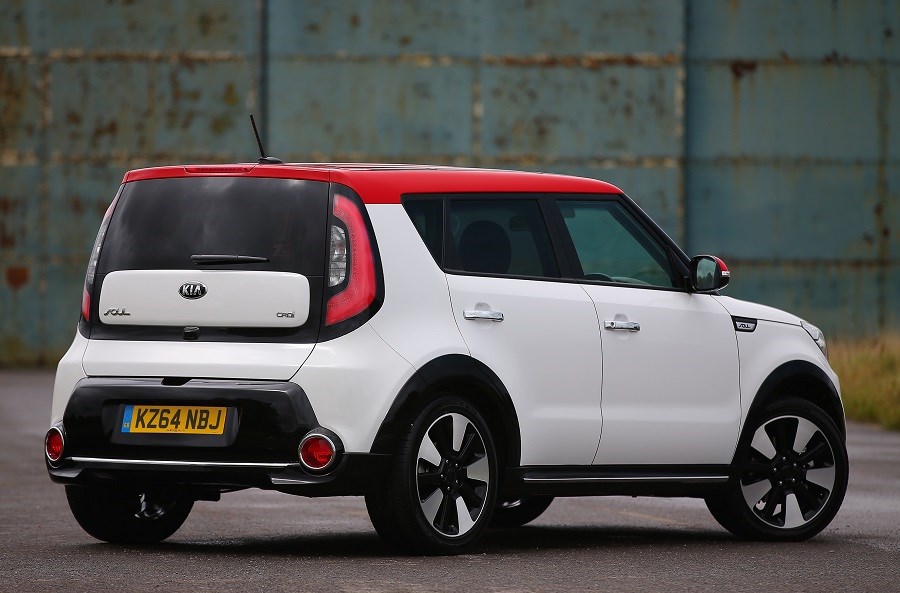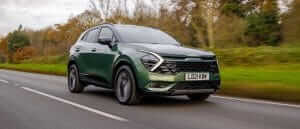Model Review
Following on from several concept cars, Kia officially unveiled the all-new Soul at the 2008 Paris Motor Show.
The compact crossover segment is now a densely populated market, but at its unveiling, it had few direct rivals, and Kia built on that with its funky urban-orientated model. Kia’s statement, at the time of the global financial crisis was that it would “offer hard-pressed motorists a reason to be optimistic”.
The boxy Soul came in a range of vibrant colours, as well as with the same petrol and diesel engines found in the hatchback Cee’d, as well as plenty of standard equipment.
Latest model
A second-generation Soul went on sale in April 2014. While noticeably similar in looks to the first Soul, it’s marginally larger and offers a longer wheelbase for improved interior space.
A revised version of Kia’s trademark ‘tiger-nose’ front grille features, along with low-positioned front fog lights and a trapezoidal front air intake. A new black panel also appears at the rear. The interior benefits from higher quality materials and a new touchscreen infotainment system.
The second-generation Soul sits on the same platform as the newer Cee’d, with improved efficiency from the existing diesel engine, as well as the introduction of a turbocharged 1.6-litre petrol engine. Kia also promised the updated Soul was better to drive, too, thanks to its new underpinnings. From late 2014, the Soul was also offered with a pure EV variant, although we have a separate review for this car.
In 2017 Kia introduced a powerful 1.6-litre turbocharged petrol engine to the Soul, which delivers 201bhp and is the same unit that features in the Cee’d GT hot hatch. This allows for a sprightly 0-60mph time of 7.5 seconds, while styling changes include a bolder front bumper, 18-inch alloy wheels, red highlights and twin exhaust pipes.
Further updates to the Soul included the introduction of Apple CarPlay and Android Auto, as well as new safety tech — such as blind spot detection and rear cross traffic alert. This revised Soul went on sale in late 2016. The trim level line-up was also brought into line with the rest of the Kia range, with the Soul adopting numeric trim levels, such as ‘1’, ‘2’ and ‘3’.
In 2019, Kia revealed an all-new Soul EV, and at the same time announced the third-generation Soul would not be sold with internal combustion engines in the UK. The petrol and diesel versions have since been removed from sale.
Value for money
The Soul has always been a well-priced model, with the last version costing from £13,995, before it fell from production. That’s on par with key rivals such as the Peugeot 2008, Nissan Juke and Renault Captur, which is important in such a crowded sector.
Standard equipment is commendable, too, with all cars coming with keyless entry, air-conditioning and electrically-adjustable door mirrors. It’s not bursting with kit, but offers plenty for the price. The ‘2’ seems a better option as that adds a seven-inch touchscreen with smartphone connectivity, 17-inch alloy wheels and automatic lights to name but a few features.
However, perhaps where the Soul is most appealing is on the used market, where it represents fantastic value for money. The cheapest Souls start from as little as £2,000, although that buys an early car with over 100,000 miles on the clock. Nearer £3,000 will pay for a well-specified 2009 car with around 70,000 miles on the clock. As for second-generation models, these start from £7,000 for a 2014 model, which is fantastic value.
There are not too many nearly-new models for sale, given the Soul is no longer on sale, but we saw savings of £4,000 available off examples less than 18 months old, which seems like a good price.
Looks and image
The compact crossover segment is now a hugely competitive and popular market, as manufacturers struggle to find USPs to help sell their models. However, the Soul’s funky looks is enough to make the South Korean crossover stand out. All Souls offer bold looks — helped by boxy and distinctive styling — but the latest 2017 model is the most desirable version. That’s because of its gloss black lower trim, which gives the Soul a funky two-tone look. Large alloy wheels are also a nice touch.
The interior isn’t quite so bold, as even the later models utilise Kia’s last-generation touchscreen system, rather than the cleaner and less-cluttered screen fitted to newer Kia crossovers — such as the Stonic and Niro. All versions, minus the entry-level ‘1’ grade, are fitted with a touchscreen, though. The later 2017 model also features higher-quality materials, with more soft-touch plastics and plusher-feeling materials in general. However, even early Souls still come with a pleasant cabin.
It’s quite a mixed bag when it comes to the way the Soul drives. It all looks so promising with the Soul being offered with a range of powerful petrol and diesel engines, which deliver a decent kick, making for eager overtaking performance. However, loose-feeling steering and a firm ride somewhat dampen the passage, although it remains an eager and likeable crossover to drive. The body roll is also well-controlled given its quite a slab-sided model.
Space and practicality
Despite the Soul’s compact dimensions, it’s more practical than you might expect, and offers nearly as much space as the larger Ceed. Over time the Soul has grown in size, and the second-generation version offers a longer wheelbase, which helps to allow for further interior space.
Unlike rivals, the Soul’s boxy design doesn’t have a sloping roofline to compromise headroom, while rear legroom is excellent and means four adults can travel in comfort. Three adults in the rear could prove to be a push, but that’s no different to other similarly-sized crossovers. There’s also plenty of interior storage dotted throughout the cabin.
The boot is also a good size, and offers 354 litres, which is similar to key rivals from Peugeot and Nissan, if some distance off the class-leading Renault Captur’s 450-litre boot capacity . Folding the rear seats down increases the space on offer to 1,367 litres as well. An adjustable boot floor also helps to add some added flexibility to the Soul.
The Soul lags behind rivals when it comes to safety, with the updated Soul being awarded a four-star safety rating, just shy of the Renault Captur’s five-star rating. It’s far from being disappointing, but it just means the Soul doesn’t offer the same level of sophisticated autonomous safety tech as some of its contemporaries.
Engines
The Soul has always been offered with a limited engine line-up, and the same is true with the most recent offering, with the choice of two petrol engines and one diesel unit.
Th entry-level petrol engine is a 130bhp 1.6-litre petrol engine, which is paired to a six-speed manual gearbox. It’s capable of a 0-60mph time in a respectable 10.6 seconds and will keep going onto a top speed of 115mph. The most powerful engine in the range is the turbocharged 1.6-litre T-GDI engine, which produces 201bhp, and can accelerate from 0-60mph in 7.5 seconds and keep going to a top speed of 122mph. This comes with a seven-speed DCT automatic transmission.
The diesel option is a 134bhp 1.6-litre diesel unit, which is offered with either a six-speed manual or seven-speed dual-clutch automatic transmission. It can reach 60mph in 10.7 seconds and has a top speed of 113mph.
Running costs
The petrol engines in the Soul are quite inefficient, with fuel consumption ranging between 40.9mpg and 43.5mpg, with CO2 emissions of between 152g/km and 156g/km. This will make them costly to run for those who cover long distances.
For that reason, our pick of the range is the smooth and efficient diesel unit, which returns up to 58.8mpg, and with CO2 emissions of 127g/km. Other manufacturers do, however, offer cleaner engines than those in the Soul.
Things to look out for
Kia has built up a sterling reliability record, and the Soul continues with this trend. No common issues have come to light with both the first- and second-generation models, although the early Souls were recalled on several occasions for precautionary measures – including overheating mood lighting and to fix a faulty seatbelt pre-tensioner.
Rivals
The Soul has no shortage of rivals, with most mainstream manufacturers now having a compact crossover in their range. Perhaps the closest rivals to the Soul are the Hyundai Kona, Nissan Juke, Peugeot 2008 and Renault Captur, but other credible rivals include the Seat Arona, Kia Stonic, Citroen C3 Aircross, Citroen C4 Cactus and the Vauxhall Crossland X.
Depreciation
Kias are not known for holding their value particularly well, and the Soul is no different, with used versions starting from as little as £2,000. Later models seem to make the most sense, with up to £5,000 available off the list price for an example around a year old at the time of writing.





